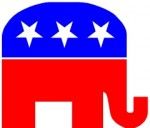Being Right: The New Reaganomics

On February 25, Rep. Patrick McHenry (R-NC) introduced bill H.R.4705, calling for the replacement of Ulysses S. Grant with the likeness of Ronald Reagan on the fifty dollar bill. Support for the bill is drawn at party lines, with Republicans from Grant’s home state of Ohio aligning with Democrats. The opposition argues that Reagan’s policies were and still are controversial, and our currency should display notables that don’t polarize citizens.
The criticism surrounding Reagan’s legacy stems from his economic policy, which liberals claim gave preference to the wealthy. Adhered to by Reagan, Thatcher and many developing countries during the third wave of democratization, Reaganomics is a variation of neo-liberal economic policy pulling from Hayekian theory rather than the established conventions of Keynes. As Ronnie believed that government interference in the economy undermined efficiency and growth, Reaganomics set out to limit government size and scope (privatization), deregulate markets, control the money supply, rein in government spending and cut taxes for all income levels and businesses to increase savings and incentivize investment. These policies pulled America out of the stagflation of the 1970’s, created ~16 million jobs and significantly lowered unemployment, inflation and interest rates. The Obama stimulus package has created/saved ~2-3 million jobs.
Democrats allege that conservatives inflate Reagan’s record to mythical proportions. While there may be some truth to this, the left is equally guilty of discrediting him. Reagan had the Iran hostages released within 24 hours of his inauguration, a feat Carter failed to accomplish for over a year. He appointed the first female Supreme Court judge (Sandra Day O’Connor), enacted economic sanctions against South Africa to lift apartheid and signed Martin Luther King Day into law. The Reagan administration’s shift to neo-liberal economic policy is in part responsible for the spread of capitalism to the third world and the character of the global economy today. Reagan also limited nuclear proliferation with the Intermediate-Range Nuclear Forces Treaty and engaged in policies that broke Gorbachev’s sickle and ended the Cold War.
The opposition claims that Reagan would be too divisive a president to put on cotton. The Iran-Contra debacle and budget deficits are continually used as ammunition. However the logic of “being too controversial” doesn’t hold water when compared to the records of other politicians on our currency. FDR (dime) interned thousands of Japanese Americans, JFK (half-dollar) was responsible for the Bay of Pigs, Jackson ($20) forcibly removed and relocated Native Americans (Indian Removal Act of 1830/Trail of Tears) and Grant’s heroics in the Civil War are less than admired below the Mason-Dixon Line. Relatively speaking, Ronnie is cleaner than Al Gore’s carbon footprint.
What McHenry should have elaborated upon is that Ronald Reagan represents not only an ideology, but an era of American solidarity. In the late 1970’s, citizens were suffering from a nasty recession, inefficient government overreach and piling taxes. Fed up, Americans rallied to the cause. A “Tax Revolt” swept the nation, and Reagan rode the wave into the White House winning 489 of 538 electoral votes in 1980, and 525 in 1984. Reagan was the manifestation of classic American values: limited federal government, free markets and free citizens. McHenry should have explained that the conditions of the late ’70s are plaguing America once more, and the sentiments preceding the Tax Revolt are currently being reawakened in the American people (Tea Party Movement). Putting Reagan on the fifty may be the catalyst needed to unite the populous once again, and counteract the statist agenda that has taken hold in government.
Reagan’s elevated place in American history is by most people’s standards, well deserved. Claims of potential controversy and polarization of the citizenry seem baseless when the logic is universally applied. The only foreseeable problem I can think of with putting Reagan on the fifty is that most conservatives (myself included) will frame this Mona Lisa of legal tender and hang it over their beds, rather than spend it. The money supply would decrease, deflation would set in, Americans would have more purchasing power and Democrats would have one more reason to hate Ronnie.








